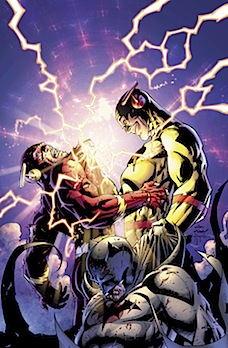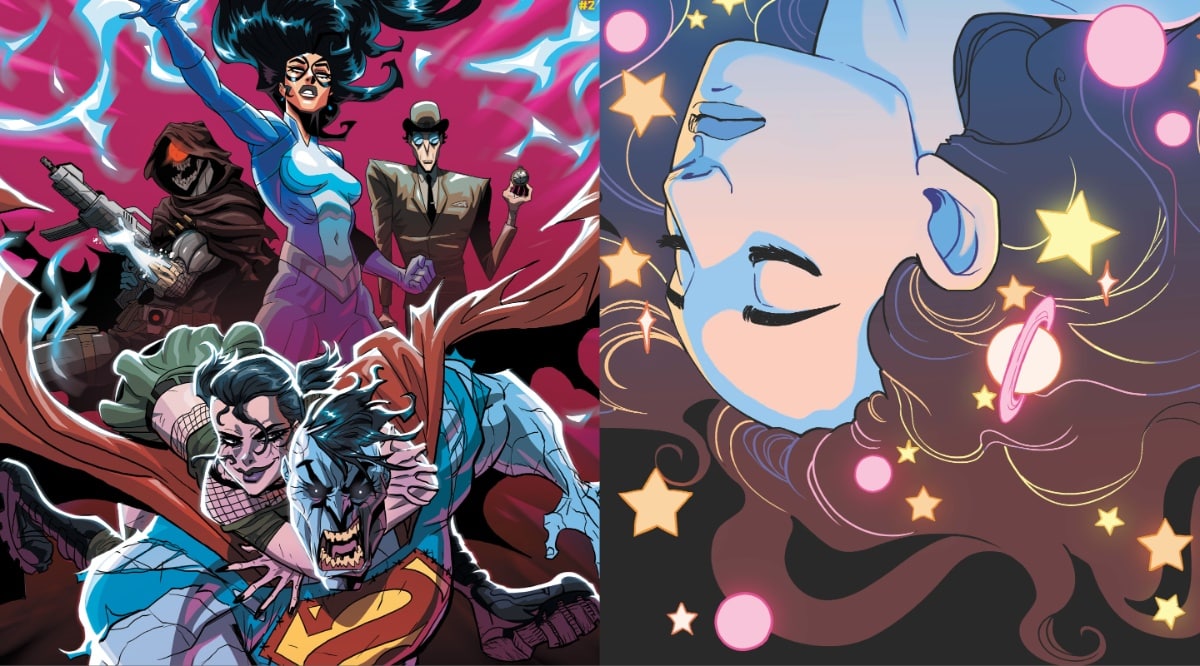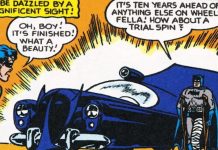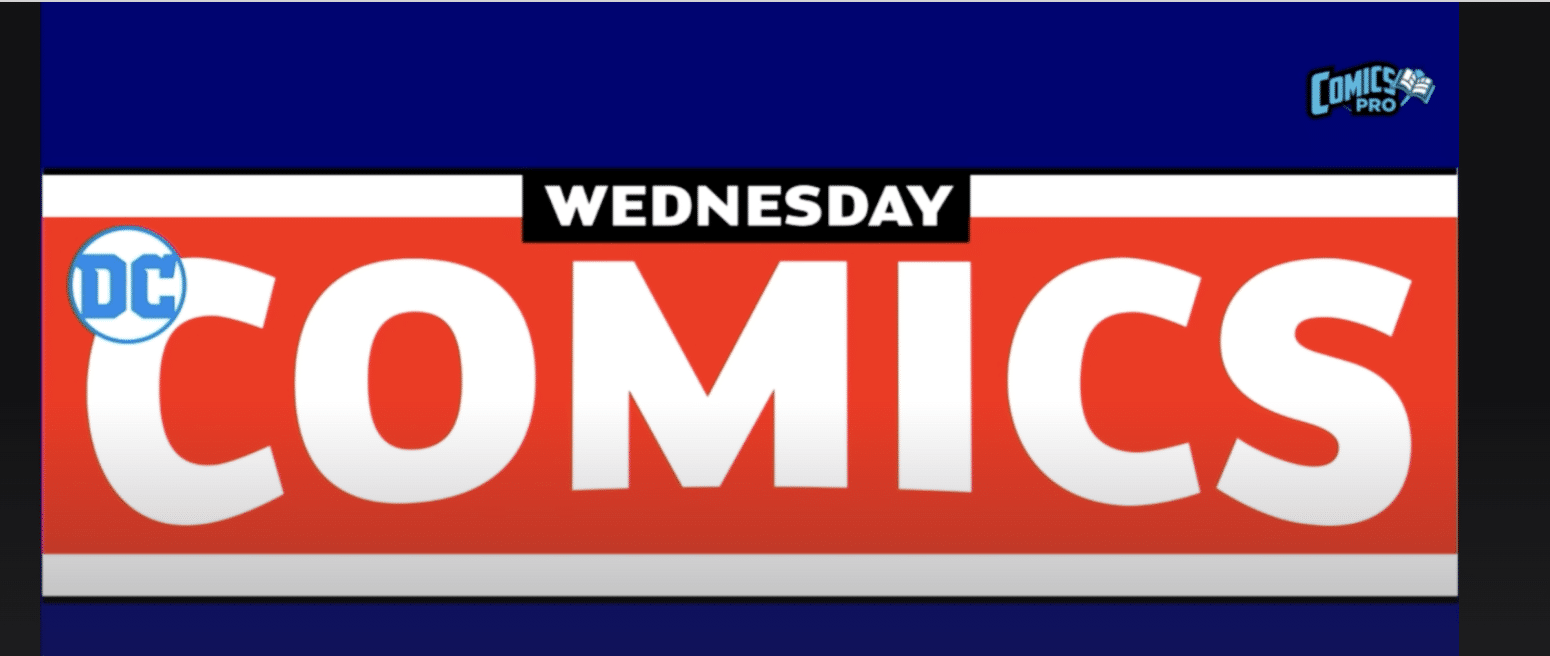As The Big Day approaches, DC is putting out more information on its massive reboot. Newsarama has an addendum to the retailer FAQ that went out some weeks ago.
NEW: If super-heroes have only existed for five years, how has Batman gone through so many Robins?
Robin is an intern program -and a very intensive one at that.
UPDATED/REVISED: What are your plans to increase the number of female creators working on the DC Comics line?
The DCE Co-Publishers recently published a blog post on this topic, in which they announced: “We’ll have exciting news about new projects with women creators in the coming months and will be making those announcements closer to publication. We know there are dozens of other women creators and we welcome the opportunity to work with them.”
NEW: What steps are you taking to keep The New 52 to an on-time release schedule?
We are stressing to all our creators that timely delivery is important. We are serious about our dates and we will take steps to ensure our books meet their deadlines even if a creator misses his or her deadline.
NEW: The release schedule for The New 52 appears set at 13 titles per week on a four week month. What are DC’s release plans for months with five Wednesdays?
Our plan for five week months is to maintain The New 52 at 13 titles per week for each of the first four weeks of the month, and schedule some of our other DC Comics and Vertigo titles in the fifth week. Our goal is to have each of The New 52 go on sale the same week of the month each and every month.
NEW: Will we be able to have a midnight sale for any of the four release weeks in September?
We’re offering the midnight sale option exclusively for the 8/31 on-sale of JUSTICE LEAGUE #1 and FLASHPOINT #5.
NEW: Is FLASHPOINT #5 important to The New 52?
Yes. FLASHPOINT #5 includes two story pages that reveal how we go from the world of Flashpoint to The New 52.
UPDATED/REVISED: Which of The New 52 titles are not $2.99?
Four of The New 52 are 40-page comics at $3.99 with additional pages of content. They are:
* JUSTICE LEAGUE – 24 story pages in #1 with 4 design or extra content pages. 22 story pages starting with #2 with 6 design or extra content pages.
* ACTION COMICS – 29 story pages in #1. 28 story pages starting with #2
* ALL STAR WESTERN – 28 story pages.
* MEN OF WAR – 28 story pages.
• Meanwhile, Rich Johnston has copy for the co-op radio ad, which DC is offering to retailers, and as someone who formerly wrote radio ad copy for a living, he has some pretty cogent comments and some razzle-dazzle suggestions to perk it up:
Dramatise some of the people you say you’re talking to, and show how it answers the problems. Love superhero movies but can’t wait the long periods between them? Someone who wants to try, but doesn’t know where to start? Someone who used to love comics but fell out of favour, who suddenly find an old longbox? Dramatise that moment, that feeling, that conversation, without being cheesy and provide a positive emotional reason for someone to pick up a comic.
You could even dramatise scenes from a comic. You don’t even have to say what it is straight away, tease them with some fascinating aspect of a comic, then give us a To Be Continued At Comics Comics Comics, on the corner of Hilton and Schmilton or whatever, launching into the relaunch facts and figures if you must.
While we have never written radio ads, we’d throw in our own suggestion: How about highlighting some of the CONTENTS. The ad seems to be aimed at new readers, so maybe making it sound like something they’d like to read would be a good way to get into it. You know, “In a world where justice had gone mad, one man must wear a bat suit.” Something like that.
I know, I know…everyone’s a critic.









Actually lots of good suggestions in the BC comments, including alternate scripts.
Honestly, the whole thing is such a mess — so very the exact opposite of the “clean reboot” that the across-the-board renumbering explicitly promises — that I can’t imagine that the whole thing won’t revert to the current status quo by either the #6’s or the #12’s; the first or second trade paperbacks.
I hope Didio and Lee are brushing off their resumes.
The five-year timeline isn’t that big a deal by itself. Fitting all the events in the DCU to date into a five-year period isn’t any less “realistic” a timeline than fitting all the events in the MU to date into a ten-year period is. Marvel’s {unstated?) policy of supposing that its heroes were generally in their 20s and keeping them at that age indefinitely is just as artificial as explicitly saying that DC’s heroes have only been fighting villains for five years. In DC’s case, they’re trying to reach new readers, some of whom might be put off at the prospect of reading about heroes who have been around since the ’30s.
The mainstream MU hasn’t had a formal reboot or crisis, but there have been numerous retcons. The Illuminati retcon was arguably worse for readers than any formal reboot would have been because, instead of providing a new starting point for all the series, it falsified years’ worth of continuity, in epics and in ordinary stories, all for the sake of allowing Bendis (et al.?) to write conspiracy fiction. Purely from a plot logic standpoint, reboots are always preferable to retcons, because reboots don’t contradict prior events, while retcons do.
I’ve always thought that Marvel’s heroes can support storylines that are more mature in nature than DC’s heroes can, because the simplicity of Superman, Wonder Woman, the Flash, et al., make them inherently better suited for children’s stories. (What’s the most mature DCU storyline ever published?) However, if editorial manipulation is offensive, there’s no more reason to read Marvel comics than there is to read DC”s.
SRS
The five year timeline isn’t a problem in and of itself, but the whole thing (to me, anyway) seems more complicated than a “we are starting over from scratch” reboot should. Some existing DC continuity took place, most has not, which is which? Each Robin gets one year to train before moving on? Did Jason still die and get reborn within those five years? I guess the typical “new reader” will neither know nor care about any of that regardless.
I’m not really bothered by any of it and am looking forward to some of the titles (while also lamenting the loss of Secret Six) but it still seems, on the surface at least, overly convoluted.
Also, the answers to most of the FAQ are hilarious in that they don’t really answer anything. QUESTION: “What steps will you take to ensure the books are released as scheduled?” ANSWER: “We will take steps to make sure the books are released as scheduled.” QUESTION: “What are your plans to include more female creators?” ANSWER: “We have plans to include more female creators.” etc etc
The amount of time any single event or storyline requires is only relevant to the particular event. Over in the MU, for example, the VISION & SCARLET WITCH maxiseries, one of my favorite works, supposedly took place over a bit more than nine months. Could those nine months conceivably fit into the MU’s 10-year timeline? No. That doesn’t mean there’s no continuity, but dates are meaningless. The continuity is based on relating events to each other, sequentially.
SRS
I’m just tickled that they’re even bothering with radio ads – not knocking radio, just saying that trying to advertise a purely-visual medium through a purely-non-visual medium is going to be tricky. I tip my hat to anyone brave enough to give it a shot!
Is the Illuminati thing really a retcon? To my knowledge, it didn’t forcibly contradict anything, just revealed something we didn’t know before.
Yes, as opposed to a story being retrofitted into continuity, because of conflicts. The Avengers/Defenders War, for example, had Dr. Strange opposing Iron Man. Dr. Strange, the leader of the Defenders, would have never considered joining the Illuminati. His mere involvement violated decades worth of stories.
Prequels aren’t retcons, of course, and Niven and Lerner’s Juggler of Worlds retrofitted events into the Known Space timeline seamlessly, as far as I know. Retrofits take work, though.
SRS
@Synsidar: What’s the most mature DCU story? Well, Identity Crisis’ retroactive rape of Sue Dibney’s probably the winner, though I’d postulate that it would take a pretty immature mind think that one up….
I too love the answer about keeping the books on schedule: “We are stressing to all our creators that timely delivery is important.” See? Now we know what’s been the problem with deadlines all along: nobody stressed the importance of deadlines! They just didn’t know! Problem solved!
I can’t work up much enthusiasm for reading IDENTITY CRISIS either. Rape isn’t (shouldn’t be) a selling point.
SRS
@Synisdar:
1) Regarding whether or not the DCU can sustain more mature storylines ala the Marvel Universe: That’s a silly conclusion based on
a) the similarly archetypal nature of Marvel heroes such as Captain America and, arguably, the archetypal nature of superheroes in general. Heck, the Fantastic Four weren’t created to be a more “mature” set of characters or storytelling vehicle than the DCU Heroes, they were created specifically in reaction to the Justice League! Moreover, they’re the archetypal *family unit!*
Conversely, there are numerous examples of the compatibility of DCU concepts with relatively more “mature,” non-archetypal storytelling of the Marvel Universe: Wolfman & Perez’s New Teen Titans (which included several archetypal sidekicks of the DCU’s main archetypal heroes), Ostrander’s Suicide Squad and Spectre, and going on 25 years of various (but not all) Batbooks, just to name a few.
I think that you’re trying to make a distinction without any actual difference regarding what constitutes “mature” characters and/or characters better or worse-suited for children’s stories in the mainstream DCU and mainstream MU lines. Really, the hackneyed, dumb, elitist (and Alan Moore-ishly hypocritical) argument that the archetypal characters should only appear in stories written for children — although you try to write around the fact that that straw man argument is the point you’re really trying to make.
b) the concept of retcons in general. The concept of the retcon is in and of itself nothing more than a storytelling tool. It is inherently value-neutral in and of itself with value only being assigned to how the concept is applied to any given story, storyline or Event campaign (ie: the various Crisis events, Fear Itself, etc.). Your choice to cite the Illuminati as a bad example of a retcon is specious when juxtaposed with the, err . . . archetypal example of what’s arguably accepted in hardcore superhero comics fandom as the effective retcon: The pre-Crisis All-Star Squadron. Neither retcon so much contradicts or falsifies previous stories as they expand on, recontextualize or happen around existing stories. I thought that both sets of retcons, the All-Star Squadron *and* The Illuminati, were effective, so it seems to me that your disapproval of the Illuminati concept is based more on your attachment to/preference for Marvel Universe stories over DCU stories that on anything else. By contrast, my objection to the Nu52 isn’t that it’s happening or that it changes anything in particular, it’s that it’s obviously slapdash in execution on so many levels that even the more apparently solid concepts are all-but handicapped by the massive errors that Didio and Lee have committed so far.
3) Regarding the five-year timeline of Nu52: Any time a company has to kick off a new product line with a FAQ that tries to dispel the confusion of both readers *and* retailers weeks and months before the product line debuts, said product line is inherently compromised in both concept and execution. Not a failure in marketing — a failure in creation. Yes, some series will inevitably work in the sense that when you throw enough crap against a wall, some of it will stick. But that doesn’t mitigate the fatal flaw in the entire plan: the mere fact that you as a company are confusing your customer base. I mean, this is the umpty-jillionth psuedo-reboot of the DCU since Crisis on Infinite Earths and, as is always with these reboots, the most glaring flaws start and end where they always do with these reboots and pseudo-reboots: with DC’s unwillingness to start everything over again with a clean, day-one reboot and consequent dependence on what generally turns out to be the worst examples of retcons just to make the existing concepts compatible with the new concepts.
When a company provides answera as so ill-conceived as that the numerous Robins were all interns, the company makes itself look like Glee’s sloppy, flippant and ADD-ridden showrunner, Ryan Murphy, is running the whole thing. Or, in short, it’s as if they’re pulling everything out of their asses.
(Which just begs the question, “Hey, Didio — do you know that we can see you?” But I digress . . .)
When a company restarts an entire product line from #1, which inherently, explicitly promises a reboot but says that it’s NOT a reboot in press releases that the casual readers, new and old, are unlikely to read before the new comics debut, then the company is just flat-out being disingenuous on some level, whether it’s their assertion that this product line relaunch is not a reboot when it is or if it’s a reboot when it isn’t. The explicit prevarication is a fatal problem.
If you muddle the nature of your intentions from the start, how do you expect us to believe that you have even the faintest idea how to get less muddled, to get focused, to be honest and straightforward and, well, competent?
You can’t eat your cake and have it, too.
A guiding principle for any writer who handles series characters should be to write stories which are suited to the characters. Take these common types of stories, listed in order of desirability:
1. Character-driven story, in which a situation is specific to the hero.
2. Plot-driven story, in which the hero is thrust into a situation which isn’t specific to him, but could be interesting, such as a natural disaster .
3. Formula fiction, in which the situation dictates the hero’s behavior, such as a mind control story. The hero succumbs to mind control temporarily but frees himself before dong anything wrong.
4. The retcon, in which the hero’s history is changed, in order to shock the hero and/or the reader, and written for the purpose of fitting the hero into a desired (future) situation.
Types 1 and 2 involve at least some creative thinking. Types 3 and 4 do not. A type 4 story should never see print. It harms the characters, since undoing the effects of a retcon is difficult — who wants layers of retcons? — and wastes the reader’s money.
******************************************
DC heroes such as Superman and Wonder Woman are pop culture icons who embody virtues, separately from their roles in stories. That makes complicating their natures difficult. Marvel heroes were written more like genre fiction characters in the ‘70s and ‘80s, so they have flaws that readers are more willing to accept. The differences between the DC and Marvel characters aren’t huge, but they exist.
SRS